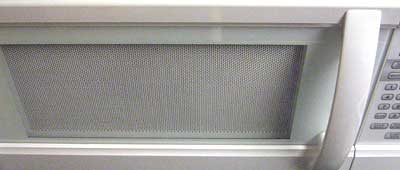Microwave Oven Used As A Faraday Cage?

Reader Question:
Can an old microwave oven be used as a Faraday cage?
Answer:
Maybe, to an extent, an old microwave oven may be re-purposed as a Faraday cage against EMP (electromagnetic pulse). In fact, its design is very much similar to a basic Faraday cage (with a probable caveat related to frequency / wavelength). A Faraday cage is an enclosure formed by conducting material or by a mesh of such material. A microwave oven’s very design is to enclose the electromagnetic radiation of microwaves, and to keep it’s energy from getting out. The reverse will also be true – they can’t get in.
Think of a Faraday cage as a reflector. A reflector of electromagnetic waves. It reflects waves on the outside from getting in and waves on the inside from getting out.
A Faraday cage by its very definition does not have to be grounded to reflect or keep out electromagnetic waves. From inside the cage it makes no difference if the conductive shell is grounded or not. The inside ‘doesn’t know’ about the outside with regards to electromagnetic radiation. If the Faraday cage is grounded it will simply shed off any static charge.
The effectiveness of the ‘reflection’ properties of a Faraday cage depends upon:
– the wavelength of the electromagnetic radiation in question
– the diameter of the holes in the cage’s conductive material
– the conductivity of the material itself. Aluminum, or even steel window screen is “good enough” to prevent any significant electromagnetic radiation.
A purpose built Faraday cage may be made of copper screen. It doesn’t necessarily need to be a solid conductive material. As long as the holes in the screen are smaller than the wavelength of the frequencies that you are trying to protect against, a screen mesh works just as well as a solid piece of metal.
An EMP is a broadband, high-intensity, short-duration burst of electromagnetic energy.
In the case of a nuclear detonation, the electromagnetic pulse consists of a continuous frequency spectrum. Most of the energy is distributed throughout the lower frequencies between 3 Hz and 30 kHz. However the first effects of nuclear detonation are the very-high-frequency pulses, in the microwave range, and can work their way into a Faraday cage if there are cracks, seams, or vents.
The frequency of a microwave oven is 2.45 GHz (gigahertz) and has a wavelength of 4.82 inches. Since the holes of the screen mesh of a microwave oven are small compared to the wavelength of the microwave itself, little radiation can leak out. There are also mesh screens on the sides of the oven cavity, one to protect the oven light while allowing it to shine into the cavity, the other to permit ventilation.
A microwave will potentially (partially?) protect your electronic gadgets during an EMP, but perhaps only to an extent. A microwave oven is designed to protect at 2.45 GHz wavelength. Given that an EMP is broadband, there may be pulse radiation energy from other frequencies which may not be adequately attenuated to protect your devices if used as a Faraday cage. It’s all about dB attenuation (protection) versus frequency along with the strength of the source energy itself.
